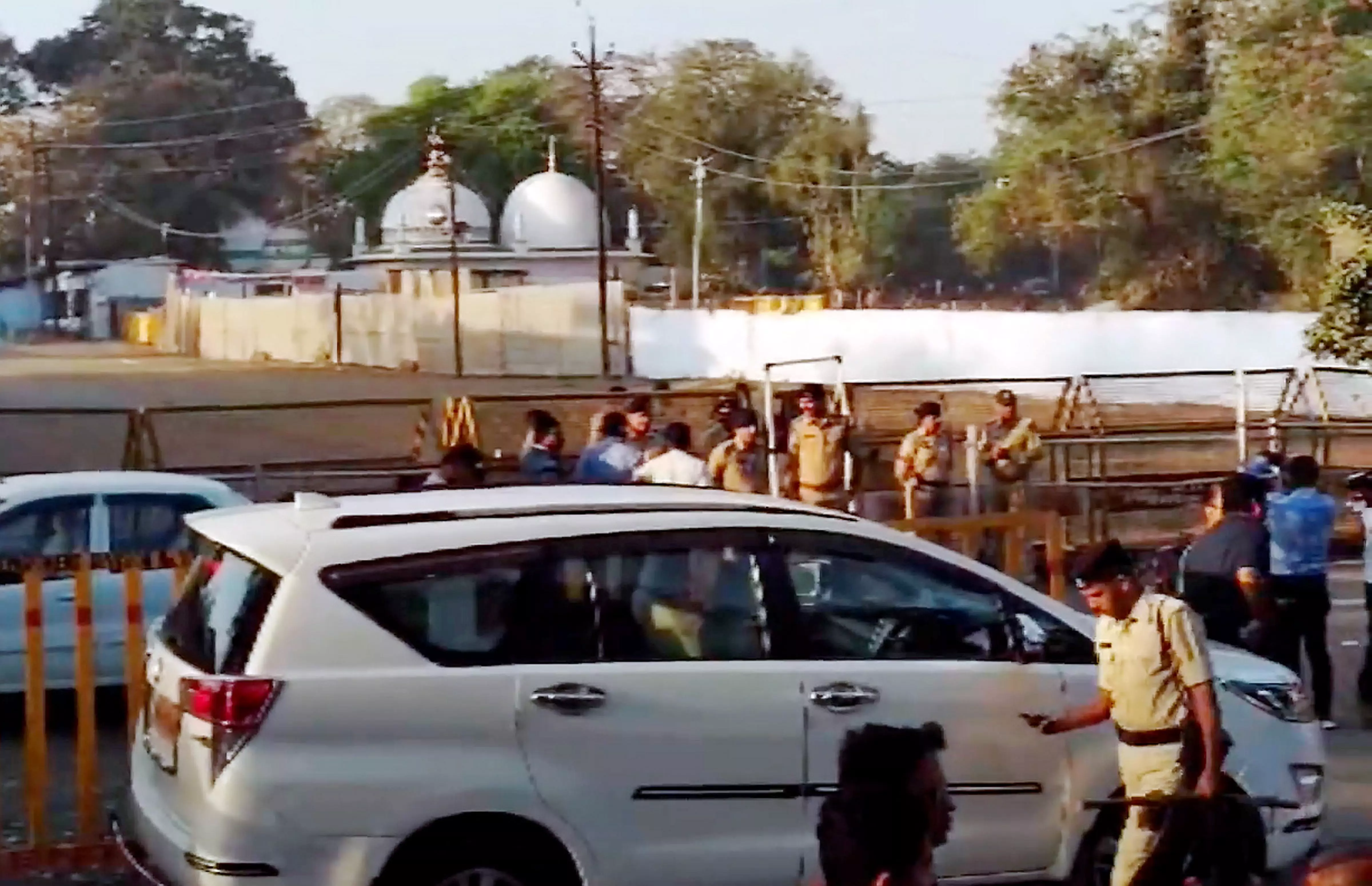
Explained: What's Bhojshala complex dispute and what ASI survey report has to say on it
Declared a protected monument in 1951, the 11th-century Bhojshala complex is treated by Hindus as a temple dedicated to Goddess Saraswati, while Muslims call it the Kamal Maula Mosque

With the Supreme Court agreeing to consider listing a plea against a “scientific survey” of “Bhojshala”, a medieval-era structure in Madhya Pradesh's Dhar district which both Hindus and Muslims claim as their own, the controversial issue is back in the spotlight.
The apex court move came after a petition was filed by the Maulana Kamaluddin Welfare Society, challenging the March 11 order of the Madhya Pradesh High Court for a “scientific survey” of the shrine to ascertain it belonged to which community.
In its March 11 order, the high court order had directed the Archaeological Survey of India (ASI) to survey the Bhojshala complex within six weeks.
What is the dispute surrounding the medieval era structure?
While Hindu community claims that the mosque was built after destroying Hindu temples, the Muslims attribute their claim on the structure to the surveys conducted by the Archaeological Survey of India (ASI) way back in 1902 and 1905.
The Hindu side claims that historical documents and research by scholars clearly indicate that Bhojshala complex, with Vaghdevi temple, existed hundreds of years before Kamal Maula Mosque.
It was Hindu Front for Justice which moved the Madhya Pradesh High Court, pleading that a mosque was built on the preexisting Bhojshala temple during the reign of Alauddin Khilji at the turn of 13th-14th century. The outfit contended that Kamal Maula Mosque was built during the regime of Mehmood Khilji (II) in 1514. It also cited ASI’s “study reports”, stating that Bhojshala and Vaghdevi temple were destroyed to build a mosque following directions of Islamist rulers and forces.
To substantiate its claim, the Hindu side also pointed at various structures and carvings in the complex to argue that there are Sanskrit shlokas inscribed on the floors, pillars and walls, which have been deliberately defaced and scratched by visitors from the other community. According to them, the structure also has carved pillars with defaced images of Hindu gods and goddesses, including Sun God. Moreover, the presence of a large ‘hawan kund’ and other kunds indicate they were built for yajnas and rituals, they said.
On the other hand, the Muslim side claims that salah/namaz is being offered at Kamal Maula Mosque for the last seven centuries. They argue that the site was surveyed in 1902 and 1903 and established as a mosque. However, the ASI doesn’t have any record to confirm as to when Kamal Maula Mosque was constructed.
The Muslims claim that there was no demolition of any existing place of worship by Maula Kamaluddin Chisti, a disciple of Nizamuddin Auliya after whom the mosque was actually named. Maula Kamaluddin Chisti is said to have come to Dhar in 1291. For about four decades, Maula Kamaluddin Chisti preached in the area. The tomb of Maula Kamaluddin Chisti was constructed adjacent to the mosque inside the complex. Moreover, the Muslims claim that the ASI mentioned in its records about the Kamal Maula mosque in 1902.
What has been the status quo of Bhojshala?
Declared a protected monument in 1951, the 11th-century Bhojshala complex is treated by Hindus as a temple dedicated to Goddess Saraswati, while Muslims call it the Kamal Maula Mosque.
The disputed site has maintained status quo for the last around two decades. The ASI had issued an order on April 7, 2003, concerning access to the monument after a controversy erupted. As per the order, which has been in place for the last 21 years, Hindus are allowed to worship in the Bhojshala on Tuesdays, while Muslims can offer namaz at the place on Fridays.
Though some minor issues cropped up at times, but nothing major happened and the system has worked smoothly till now. The Hindu Front for Justice has challenged this arrangement in its petition.
Dhar district, with over 21 lakh population, has around 5.3% Muslims (2011 census). But the density of Muslim households around the Bhojshala complex is higher than other parts of town. Hindu families also live in the area.
What are the findings of the ASI survey report on Bhojshala complex?
The Archaeological Survey of India (ASI) on Monday (July 15) submitted its scientific survey report of the disputed Bhojshala-Kamal Maula mosque complex to the Indore bench of Madhya Pradesh High Court. ASI's counsel Himanshu Joshi handed over the report, which runs into more than 2,000 pages, to the HC's registry.
According to ASI, the existing mosque structure was constructed using parts from earlier temples at the site, Live Law reported. The archaeological remains recovered during its scientific survey of the site reveal that the pre-existing structure “can be dated to the Paramara [dynasty] period”, the agency said.
“From art and architecture of decorated pillars and pilasters, it can be said that they were part of earlier temples and were reused while making colonnades of the mosque over the high platform of basalt,” the report stated, according to Live Law.
The survey report said that human and animal figures had been “chiselled out or defaced”. The alterations are evident on pillars and pilasters in the western and eastern colonnades, the lintel in the western colonnade, and the entrance of the southeast cell of the structure, the report said.
It added that the inscriptions in Sanskrit and Prakrit highlight the site’s historical, literary and educational significance. The agency said that it had found one inscription mentioning King Naravarman of the Paramara dynasty, who ruled between 1094 AD and 1133 AD.
On the structure’s nature and age, the ASI report states that the “retrieved architectural remains, sculptural fragments, large slabs of inscriptions with literary texts, Nagakarnika inscriptions on pillars, etc suggest that a large structure associated with literary and educational activities existed at the site”.

